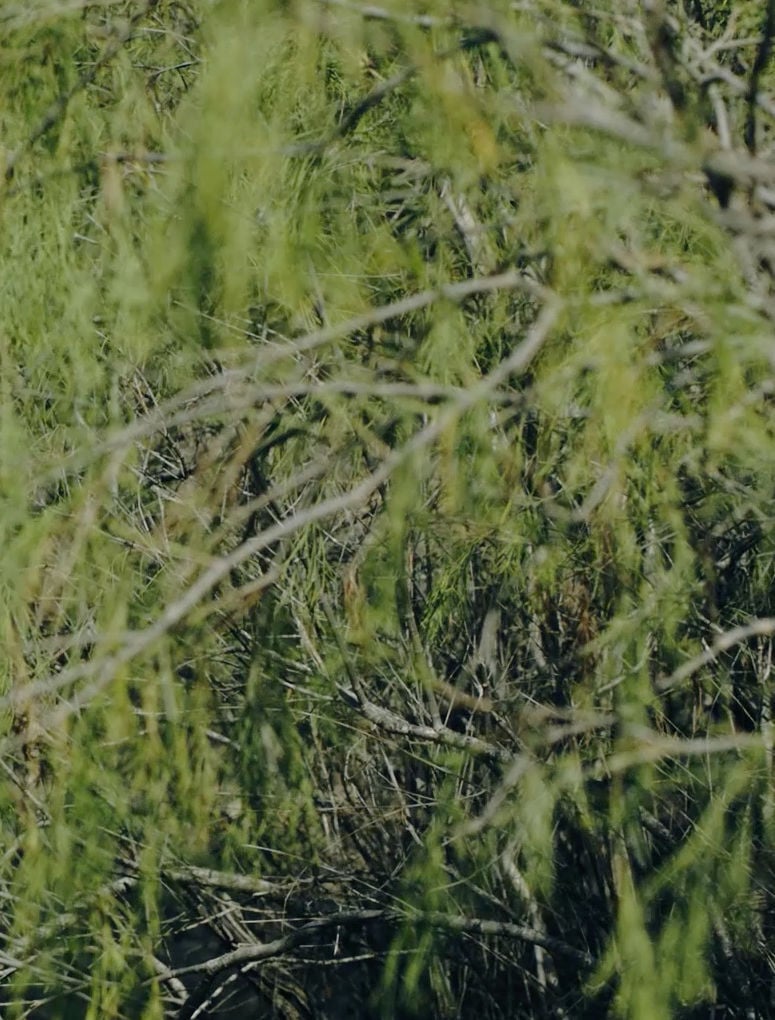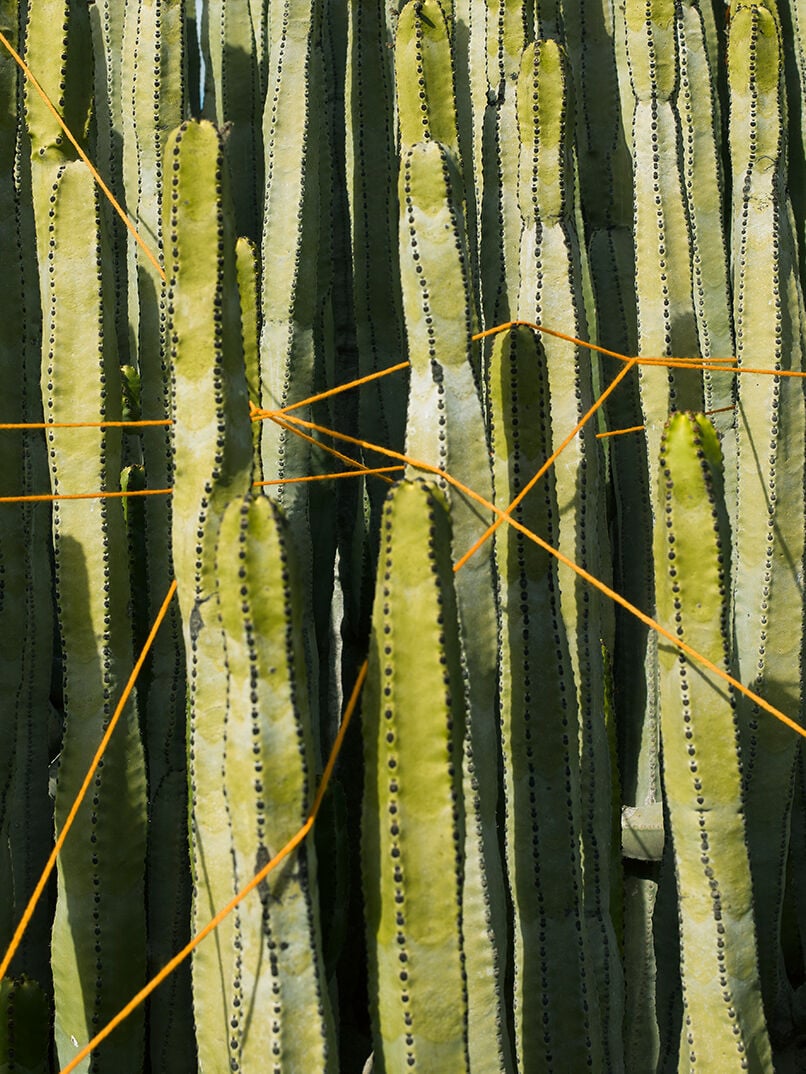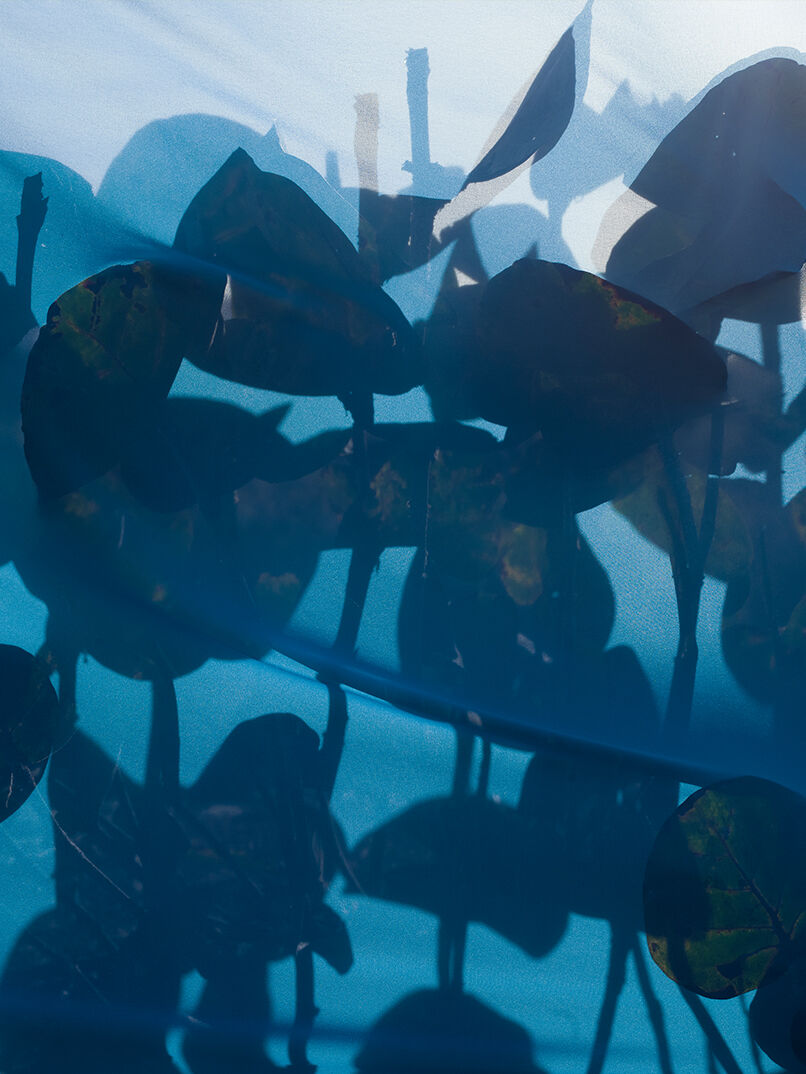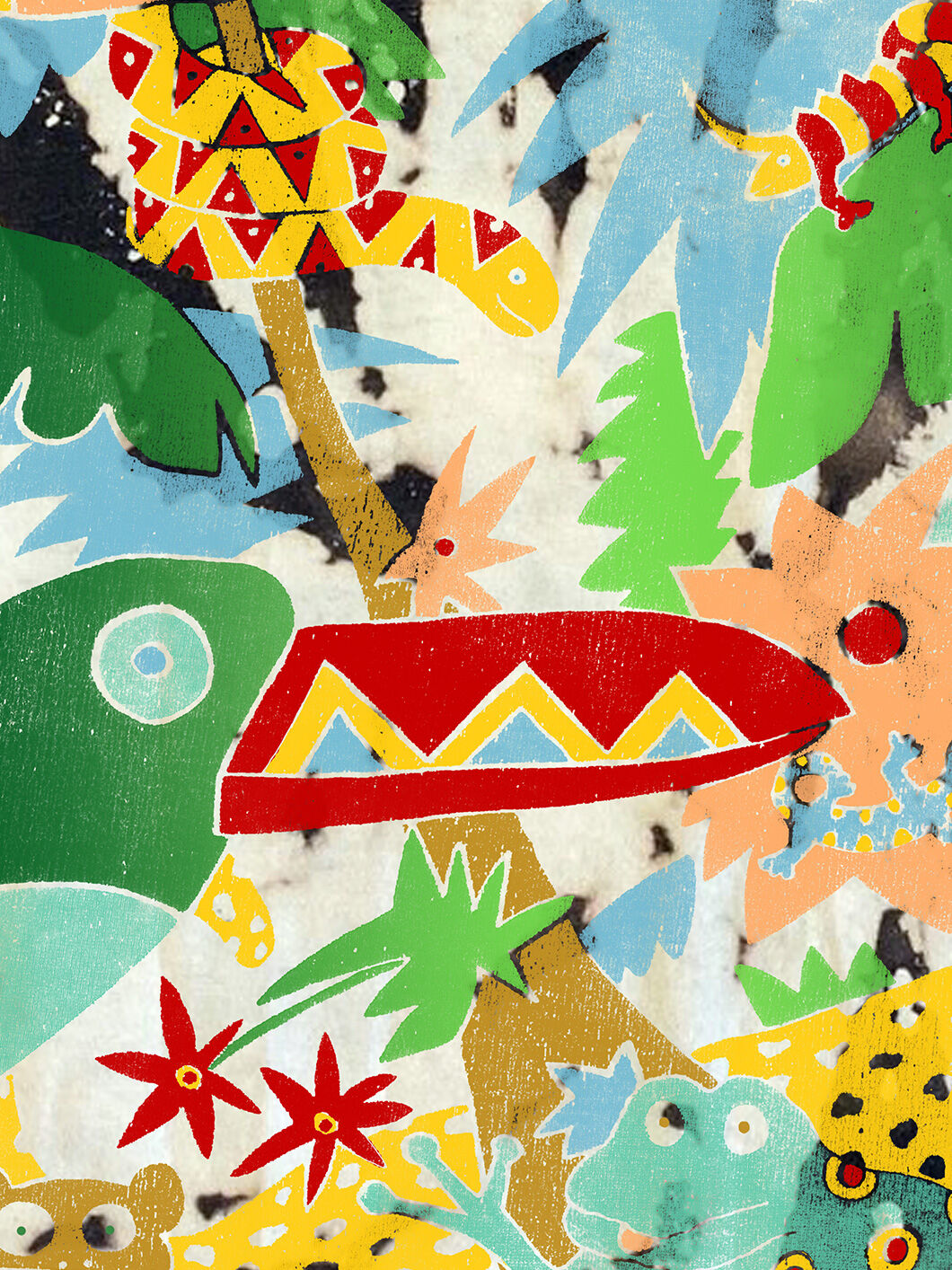Viscose is one of the top five most-used materials at Stella McCartney, beginning its life as wood pulp. Mother Earth’s trees and forests provide us with essential ecosystem services, and we are committed to responsibly sourcing our forest-friendly viscose in order to treasure and protect the natural environments we depend on. Discover what makes our viscose forest-friendly.
Forest-friendly viscose in Stella McCartney collections
Our forest-friendly viscose is used in our woven fabrics, the backing of some of our animal leather alternatives and our knitwear. Arguably its most recognisable use is in our stretch cady, which is made from a viscose-acetate mix with a small amount of elastane. We use this lightweight, comfortable and versatile fabric in both everyday ready-to-wear and eveningwear.
Responsibly sourced forest-friendly viscose is also used for our tailoring and outerwear lining – where we combine it with organic cotton – and in our iconic compact knit styles. A key part of our knitwear collection, these pieces are modern and clean, sporty and minimal.
We have a long-standing partnership with Canopy, committing to never source materials from ancient or endangered forests. All our viscose is fully traceable back to its country of origin – a level of transparency that we are incredibly proud of and will build upon. Trees are harvested responsibly, preventing deforestation and no net loss of forests over time.
Since 2017, all the viscose we use has come from FSC-certified wood pulp and Canopy-approved suppliers – forests that are managed in accordance with strict standards, protecting them from deforestation by maintaining forest cover, conserving biodiversity, engaging Indigenous communities and that are supported by rigorous audits.
Whenever you see ‘forest-friendly viscose’ labelled on our products and across our website, we are referring to this FSC-certified cellulosic material – sourced from our Canopy-approved suppliers.
- FSC® is the registered mark of Forest Stewardship Council, an international non-profit, multi-stakeholder organisation established in 1992. Its mission is ‘protecting healthy, resilient forests for all, forever’
- The FSC® audit forests against rigorous standards. It requires managers to follow 10 base principles, from legal requirements and the social and economic wellbeing of workers and local communities, to upholding the rights of Indigenous communities and conserving and the ecosystems of managed forests and beyond
- The Forest Stewardship Council set the bar globally for responsible forestry practices.
- Managing forests sustainably means using them in a way that maintains their natural productivity, biodiversity and regenerative capacity, as well as ensuring that they can meet society’s needs now and tomorrow (1)
- ‘Good’ sustainable forestry practices mimic nature’s patterns of disturbance and regeneration, balancing the needs of the environment, wildlife, local communities and supporting livelihoods, while conserving our trees for future generations (2)
All about viscose
The fashion industry cuts down 300 million trees annually to create cellulose-based fibres like conventional viscose, 30% of which is made from pulp sourced from ancient, protected or endangered forests (Canopy).
Viscose, lyocell and acetate are types of manmade cellulosic fibres, primarily crafted from the dissolved pulp of trees – cellulose.
We use the Canopy Hot Button annual report to ensure that our suppliers are always improving their practices, as well as encouraging closed-loop chemical systems and nurturing the shift away from virgin tree pulp to incorporating Nex-Gen and recycled inputs.
Along with other fashion brands, Stella McCartney has joined the pledge to purchase 550,000 tonnes of more sustainable alternatives to materials sourced from ancient and endangered forests.
- Canopy is an environmental not-for-profit organisation developing solutions to protect the world’s ancient and endangered forests
- Stella McCartney has partnered closely with Canopy since 2014
- They work collaboratively with businesses and partners to transform unsustainable supply chains, catalyse innovative solutions and keep the world’s vital forests protected and thriving.
- Deforestation is the destruction of forests by humans
- It is an active contributor to biodiversity loss. The conventional sourcing of forest-based raw materials tends to disproportionately affect Indigenous and local communities (3)
- Deforestation comes in many forms, including fires, clear-cutting for agriculture, ranching and development, as well as unsustainable logging for timber. The biggest driver of deforestation is agriculture (4)
- Approximately 16% of the Amazon rainforest has been lost in the last 50 years, largely due to forest conversion for cattle ranching (5)
- Mother Earth’s forests and trees have the greatest potential to reduce carbon emissions. Reforestation, avoiding forest loss and harnessing better forestry practices could cost-effectively remove 7 billion tonnes of carbon dioxide from the atmosphere annually by 2030 (6)
The problem with forest-based fibres
Every year, more than 200 million trees are cut down to create fabric (7). Some comes from responsibly managed forests and industry-leading low-risk suppliers like those Stella McCartney uses, although a significant amount of the global viscose supply still originates from vital ecosystems including ancient and endangered forests. This is unacceptable.
Key issues associated with viscose across the wider fashion industry include:
- Deforestation has devastating impacts on our planet, wildlife and people: carbon dioxide and associated greenhouse gases being released into the atmosphere, biodiversity and habitat loss, soil exposure and degradation, land taken from Indigenous communities and all species on land
- Wood pulp continues to be sourced from ancient, endangered or protected forests
- Viscose production is typically part of a chemically intensive process.
The most common causes of deforestation are illegal logging and unsustainable forest management.
The deforestation and forest degradation of Mother Earth continues at an alarming rate; 10 million hectares of forests are chopped down annually (8) accounting for around 12% to 20% of the global greenhouse gas emissions that contribute to climate change (9).
We must protect our forests: they provide us with clean water and air, give us food, medicine and resources like timber, and are a habitat for the majority of the world’s birds and animals. This is why we are committed to sourcing our viscose from FSC-certified and audited forests.
- Ancient and endangered forests are defined as ‘intact forest landscape mosaics, naturally rare forest types, forest types that have been made rare due to human activity and/or forests that are ecologically critical for the protection of biological diversity’ (10)
- Key endangered forests include: the Canadian and Russian Boreal Forests; the Coastal Temperate Rainforests of British Columbia, Alaska and Chile; and the tropical forests and peatlands of Indonesia, the Amazon and West Africa.
Humankind and ecosystems are strongly interrelated in a multitude of ways. Direct and indirect benefits from ecosystems are known as ecosystem services.
Our viscose supply chain
By partnering with Canopy, we can assess all available suppliers on a ‘scorecard’ and select our preferred suppliers based on chemical assessments; we avoid those that are flagged as chemically and water intensive.
Our viscose supply chain is proudly transparent and entirely traceable. All of our viscose comes from Europe or the US.
The process begins at a forest level. Trees are grown and managed in accordance with the Forest Stewardship’s forest management standard, preventing deforestation and protecting biodiversity, while engaging local and Indigenous communities.
Next, the wood gets turned into pulp and becomes a fibre. This is spun into yarn and then eventually crafted into viscose.
We have two preferred viscose suppliers that reach high social and environmental standards, as well as methods to reduce chemical and water use throughout production
- ENKA®: our ENKA® wood pulp originates in the US from private, trusted landowners – fully traceable down to the state. The wood pulp is processed in Germany and then continues along our supply chain in Italy
- LENZING®: our LENZING® wood pulp is from Europe and is processed in Austria before continuing along our supply chain in Italy
- BAILU®: our BAILU® wood pulp comes from Europe and is post-consumer recycled cellulose pulp.
Measuring the impact of viscose
After realising that there was little data available about the environmental impacts of Man-Made Cellulose Fibres (MMCF) production, we commissioned our own study.
In 2017, we released the results of a new Life Cycle Assessment (LCA) – an internationally recognised, scientific methodology comparing the environmental performance of 10 different raw material sources of MMCFs, including viscose.
This was the first time a comparative LCA had ever been commissioned to evaluate global sourcing scenarios for 10 MMCF supply chains. The study examined a broad range of environmental issues, from the time raw materials are obtained from forests, through to the production of viscose and other MMCFs.
The study helps ensure our products are free from fibres derived from ancient and endangered forests. More importantly, we hope it will serve as an informative and guiding tool for the industry. Our aim in conducting this research was to help bring attention to the impact that MMCF sourcing can have on the world’s forests, species and freshwater, as well as our global climate and human health.
The future of viscose
While our forest-friendly viscose is kinder to Mother Earth, our fellow creatures and people, viscose is still virgin wood pulp – requiring trees to be cut down. Ecosystems cannot fully be replaced simply by replanting trees.
It is our Stella vision to eventually shift away from virgin wood pulp inputs entirely. We believe the future of viscose in fashion is about using Nex-Gen and recycled inputs – like agricultural waste and post-consumer textiles – to make viscose and displace the role of virgin tree pulp. We want to tread even lighter on our planet and we are working hard to get there.
Viscose material innovations
Evrnu® and NuCycl™
Evrnu® are a US-based start-up that have developed a game-changing technology that transforms cotton waste into cellulose – NuCycl™ is a new engineered fibre crafted consciously from liquefied cotton waste.
We believe that solutions like NuCycl™ are key to innovating the future of fashion. The fashion industry only recycles an estimated 1% of garments and only 12% of textiles get a second life11.
Further support for our forests
In the run-up to our Winter 2019 show, we launched our #ThereSheGrows campaign –, raising awareness about the deforestation of the Leuser Forest in Sumatra, Indonesia. This is the last place on Earth where elephants, tigers, orangutans and rhinos live side by side. We invited supporters to make a dedication to a loved one and, in return, we donated to Canopy to help them protect the Leuser Ecosystem and endangered forests around the world.
In 2021, our travelling exhibit “Future of Fashion: An innovation conversation with Stella McCartney” represented the fashion industry at COP26. At this global platform, we showcased the limitless possibilities of material innovation, spotlighting plant-based fibres like our forest-friendly viscose and regenerative cotton, Bolt Threads’ Mylo™️ mycelium-based animal leather alternative –, as well as regenerated materials crafted from waste.
Which of the United Nations’ Sustainable Development Goals does our viscose supply chain and sourcing support?
- Goal 6: Clean Water and Sanitation
- Goal 8: Decent Work and Economic Growth
- Goal 9: Industry, Innovation and Infrastructure
- Goal 12: Responsible Consumption and Production
- Goal 14: Life Below Water
Sustainably sourced wood and paper
All of the wood used in our products comes from sustainably certified sources. The same is true for the paper we use in our offices, stores and packaging. Sustainable forestry certifications give us the assurance that the wood and paper we use will protect forests for the future. You can read more about our paper and packaging here.
We use organic cotton to create products in ways that enrich the environment.
Synthetic materials can –and should– be recycled and come from recycled sources.
We source from farms committed to animal welfare and environmental stewardship, where possible.
Our paper and packaging come from recycled and certified sustainable sources.
We consider our environmental footprint at every point of our design process, even after our products have been sold.
We are exclusively releasing two t-shirts and two sweatshirts supporting Greenpeace’s campaign to stop deforestation.





















